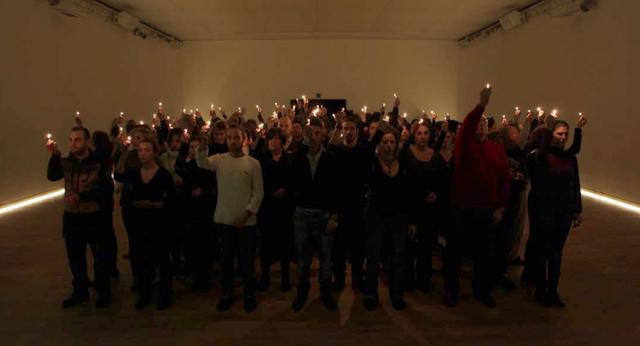ONE BY ONE
Filippo Berta
Winner of the Italian Council (V edition, 2019) promoted by the Directorate-General for Contemporary Creativity of the Ministry of Culture
Scientific Direction: Nomas Foundation and Sapienza University of Rome
In collaboration with: Tools For Culture
Public Collection: GAMeC Gallery of Modern and Contemporary Art of Bergamo
Curators and producer of the project: Giorgia Calò and Francesca Ceccherini
The work consists of a three-channel video installation (or more channels, depending on the characteristics of the exhibition space), in which people have been shot while they are counting with the index every single thorn of the dense fences built along the state borders. This action is completed with the voice of the performers, who they spell out distinctly the numerical series by their own language. The projection of the videos continues in an infinite loop, in which the individual voices blend, becoming a global chorus, as if it were a lay prayer that envelops the viewer, who is at the center of the installation. The interactivity of the installation is revealed when the viewer, moving closer to one of the projections, can distinguish the voice of the filmed person from the other voices. People who live in border areas were involved in the project, but they belonging to different generations, because the same gesture takes on different meaning based on the peculiarities of the person who does this act. “One by One” starts from the concrete action of touching the thorns of the border walls, which reveal themselves with a monumental and intimidating arrogance, but with the purpose of making us think on the infinite forms of invisible borders rooted in our being, which fuels tensions inside the society. The impossibility of reaching the end of the count offers the image of a dense network, enveloping and harnessing, of ideological frontiers that fossilize the intellectual evolution of the human being in a prehistoric phase.
The implementation of the project began in 2015 and ended in 2021. The borders of the following states were reached: Slovenia, Croatia, Hungary, Serbia, North Macedonia, Greece, Turkey, Bulgaria, Mexico, United States, North Korea, South Korea.
The project ONE BY ONE has been realized thanks to the cooperation and collaboration of hundreds of people residing in the travelled countries that have believed in and shared the project’s vision. A special thanks goes to the institutions, associations, foundations, collectives, cultural operators, as well as the residents and performers, without which the entire production would not have been possible.
























